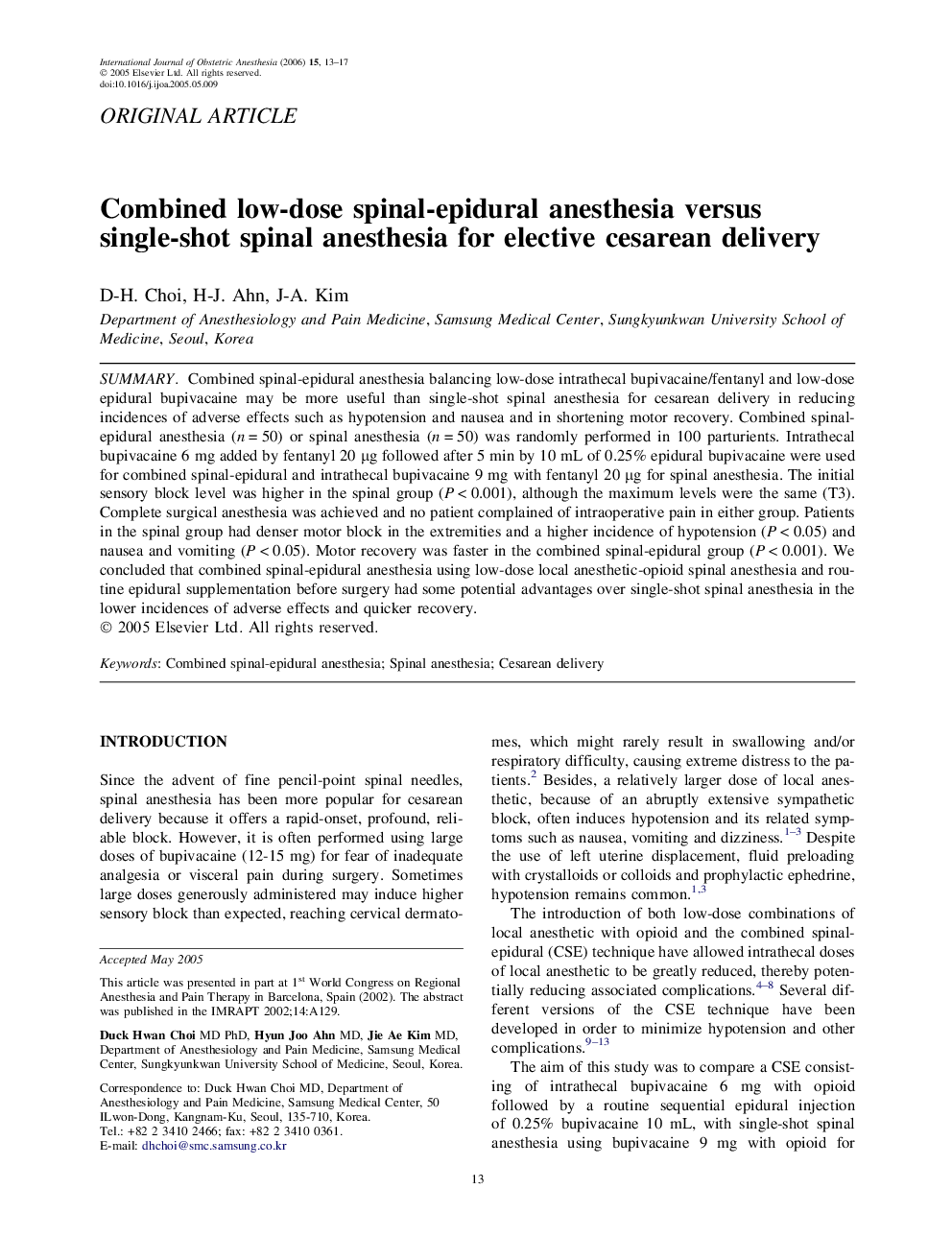| Article ID | Journal | Published Year | Pages | File Type |
|---|---|---|---|---|
| 2758490 | International Journal of Obstetric Anesthesia | 2006 | 5 Pages |
SummaryCombined spinal-epidural anesthesia balancing low-dose intrathecal bupivacaine/fentanyl and low-dose epidural bupivacaine may be more useful than single-shot spinal anesthesia for cesarean delivery in reducing incidences of adverse effects such as hypotension and nausea and in shortening motor recovery. Combined spinal-epidural anesthesia (n = 50) or spinal anesthesia (n = 50) was randomly performed in 100 parturients. Intrathecal bupivacaine 6 mg added by fentanyl 20 μg followed after 5 min by 10 mL of 0.25% epidural bupivacaine were used for combined spinal-epidural and intrathecal bupivacaine 9 mg with fentanyl 20 μg for spinal anesthesia. The initial sensory block level was higher in the spinal group (P < 0.001), although the maximum levels were the same (T3). Complete surgical anesthesia was achieved and no patient complained of intraoperative pain in either group. Patients in the spinal group had denser motor block in the extremities and a higher incidence of hypotension (P < 0.05) and nausea and vomiting (P < 0.05). Motor recovery was faster in the combined spinal-epidural group (P < 0.001). We concluded that combined spinal-epidural anesthesia using low-dose local anesthetic-opioid spinal anesthesia and routine epidural supplementation before surgery had some potential advantages over single-shot spinal anesthesia in the lower incidences of adverse effects and quicker recovery.
